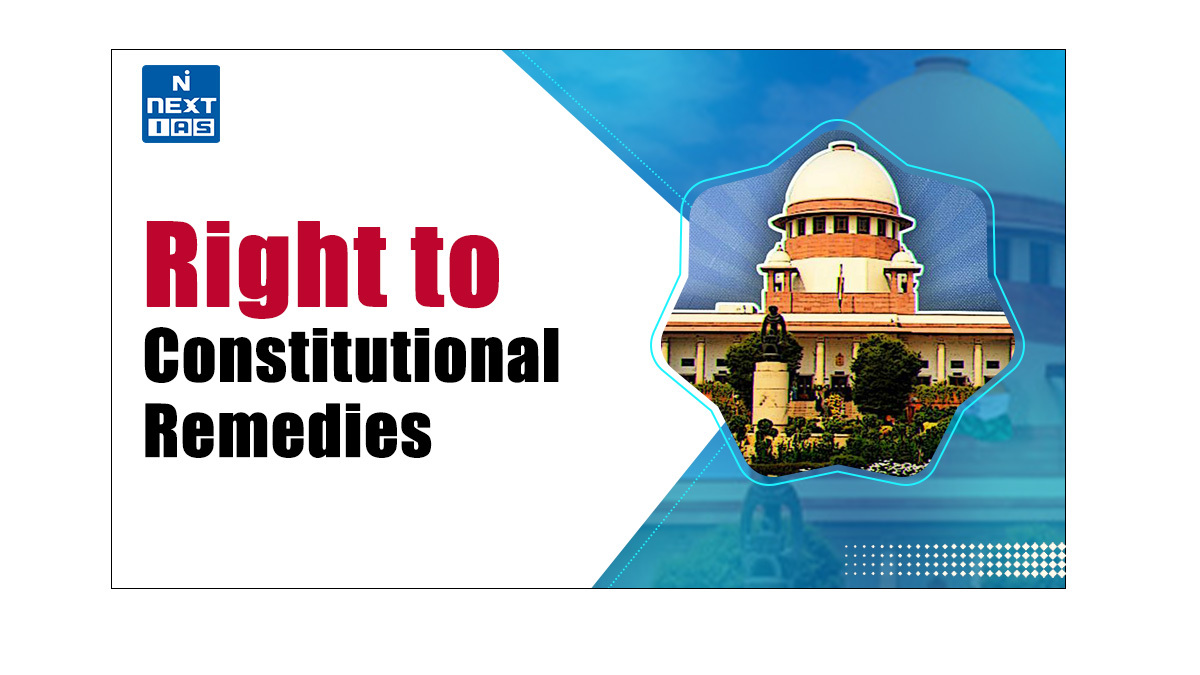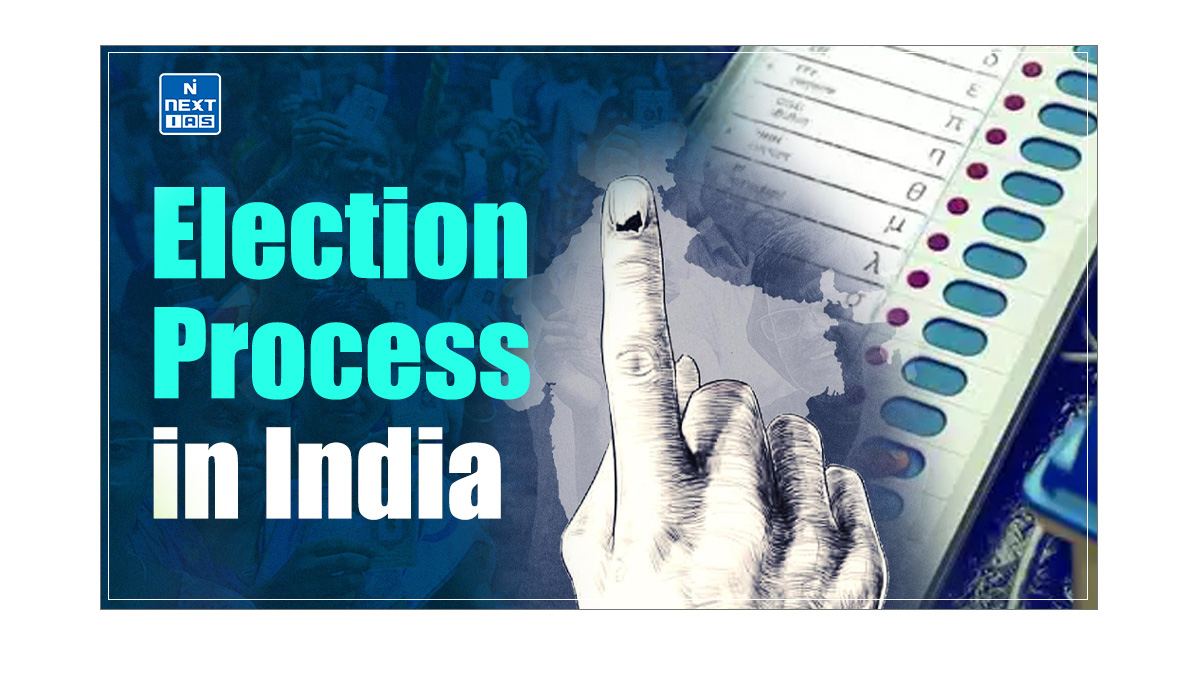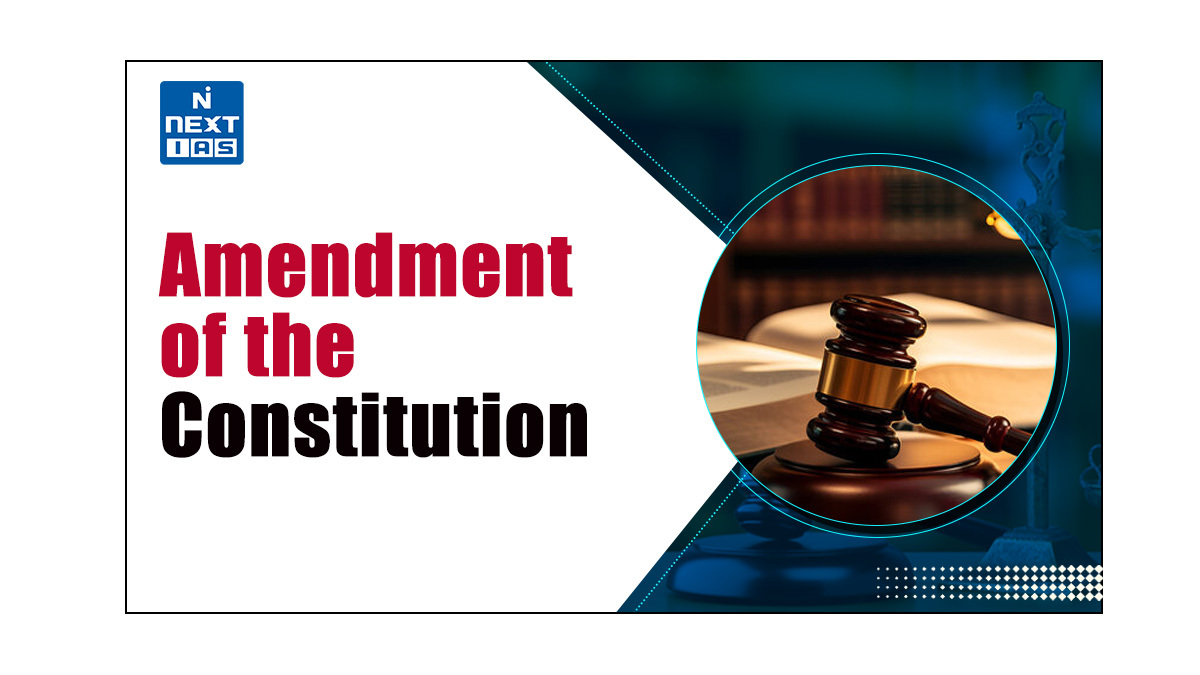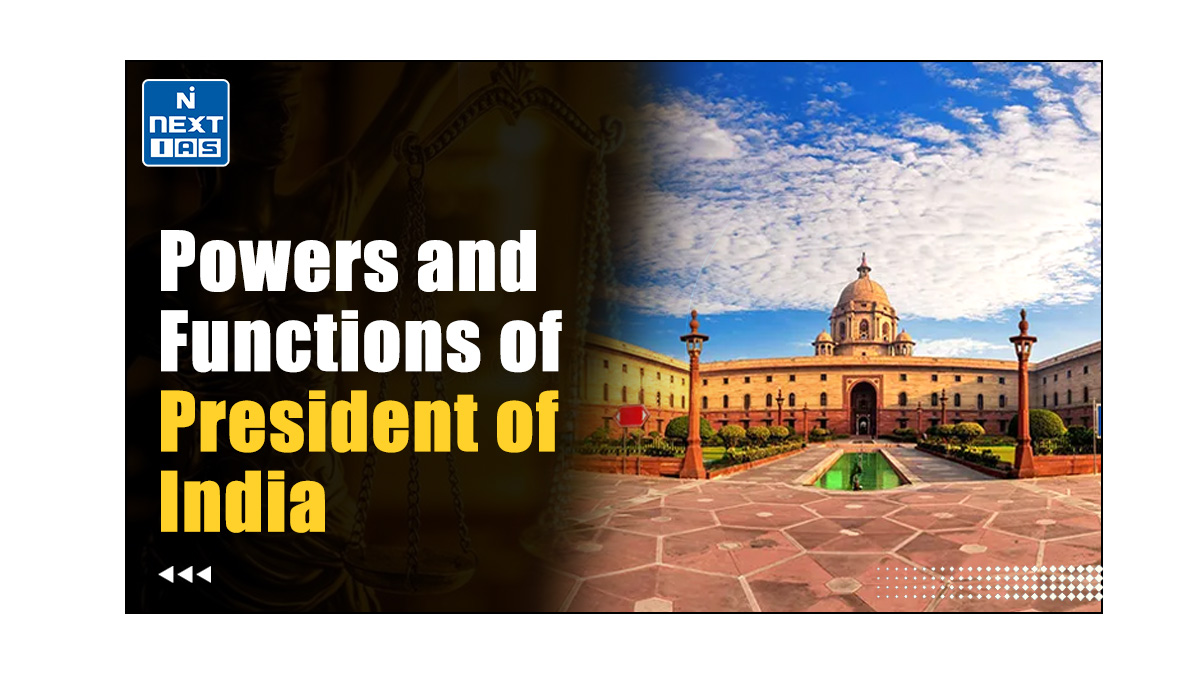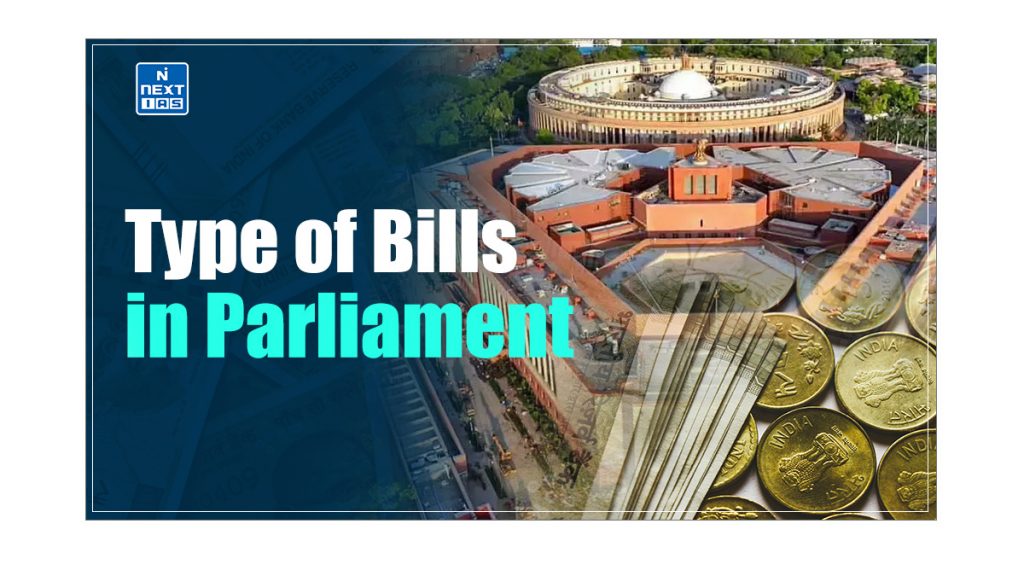
Different types of bills in Parliament allow the supreme legislative body in India to formulate laws and rules on various matters. With each type of bill serving a specific purpose and following a unique pathway, understanding the types of bills in Parliament is crucial for comprehending the legislative procedure in India. This article of NEXT IAS aims to study in detail the types of bills in Parliament, their meaning, passing procedure, and other related concepts.
What are Bills?
- In the context of Parliament, Bills are proposals for new laws, or amendments to existing laws, that are presented for debate and approval or rejection before the Parliament.
- If a bill successfully passes through all the required stages in the Parliament and receives final approval, it becomes an Act of Parliament, thereby becoming law.
Classification of Bills in Indian Parliament
Parliamentary Bills can be categorized differently on the basis of different parameters including:
- The person who introduced the bills,
- The nature of content,
- The passage procedure.
Classification of Bills in the Indian Parliament based on the above parameters is discussed in detail as follows.
Public Bill Vs Private Bill
Based on the person introducing them, bills are of two types – Public Bills, and Private Bills.
Public Bills or Government Bills
- Public Bills, also known as Government Bills, refer to bills introduced in the Parliament by Ministers.
- These bills are typically initiated by the executive branch of the government and are often used to implement the policies, programs, and manifesto promises of the current government.
- A few examples of public/government bills include bills related to taxation, defense, foreign policy, and other areas of government policy.
Private Bills or Private Members’ Bills
- Private Bills, also known as Private Members’ Bills, refer to bills introduced in the Parliament by any Member of Parliament other than a Minister.
- These bills allow Member of Parliament to bring forward issues of importance to them or their constituents, potentially addressing gaps or concerns in current legislation.
Difference between Public Bill and Private Bill
Both Public Bills and Private Bills are governed by the same general procedure and pass through the same stages in the House. However, they differ in various respects as mentioned below.
| Public Bill | Private Bill |
|---|---|
| – It is introduced in the Parliament by a Minister. | – It is introduced by any Member of Parliament other than a Minister. |
| – It reflects the policies of the government. | – It does not reflect the stand of the government on public matters. |
| – It has a greater chance to be approved by the Parliament. | – It has a lesser chance of being approved by the Parliament. |
| – Its rejection by the House amounts to the expression of want of – parliamentary confidence in the government and may lead to its resignation. | – Its rejection by the House has no implication on the parliamentary confidence in the government or its resignation. |
| – Its introduction in the House requires seven days’ notice. | – Its introduction in the House requires one month’s notice. |
| – It is drafted by the concerned department in consultation with the law department. | – Its drafting is the responsibility of the member concerned. |
Classification of Bills based on the Nature of Content
Based on their content, bills can be broadly classified into the following types:
Original Bills
- Original Bills refer to bills that embody new proposals, ideas, or policies.
- In simple words, these are the bills that are introduced in the legislature for the first time, as opposed to bills that are introduced as amendments or modifications to existing laws.
Amending Bills
- Amending Bills refer to the bills that seek to modify, amend, or revise the existing Acts.
- This type of bill seeks to improve, clarify, correct, or update the legal provisions of existing statutes to reflect current needs, remove ambiguities, or rectify inconsistencies.
Consolidating Bills
- Consolidating Bills refer to the bills that seek to consolidate existing laws on a particular subject.
- These bills aim to combine and streamline multiple existing or overlapping laws into a single, comprehensive, unified law.
- This helps to simplify the legal framework, improve coherence, and reduce redundancy.
Expiring Laws (Continuance) Bills
- Expiring Laws (Continuance) Bills refer to the bills that seek to continue expiring Acts.
- These bills ensure that specific laws, which have a defined expiration date, remain in effect for a longer period such as taxation laws, emergency provisions, or laws related to specific events or circumstances.
- The primary purpose is to maintain legal continuity and prevent a legislative gap that could arise if essential laws were allowed to lapse.
Repealing Bills
- Repealing Bills refer to the bills seeking to repeal the existing Acts.
- These bills are introduced to remove or annul existing laws or statutes that are no longer relevant, necessary, or effective.
- The primary purpose of these bills is to streamline the legal framework by eliminating outdated, redundant, or obsolete laws, thereby ensuring that the legal system remains current and efficient.
Validating Bills
- Validating Bills refer to the bills that seek to give validity to certain actions.
- The primary purpose of validating laws is to remedy legal defects or uncertainties surrounding certain past actions or events, thereby providing legal certainty and stability.
Bills to Replace Ordinances
- Bills to Replace Ordinances are legislative measures introduced in the Parliament or Legislative Assembly to replace ordinances previously promulgated by the President or Governor during the recess of the Parliament or State Legislative Assembly, respectively.
- The primary purpose of these bills is to provide parliamentary or legislative approval to the ordinances, thereby converting them into permanent laws.
Constitutional (Amendment) Bills
- Constitutional (Amendment) Bills refer to bills that seek to amend or modify or repeal any provision of the Constitution.
- These bills seek to make changes to the fundamental law of the country, altering its structure, powers, or procedures.
- The primary purpose of Constitutional Amendment Bills is to adapt the Constitution to evolving societal needs, address lacunae, or reflect changing political dynamics.
Read our detailed article on the Amendment of the Constitution.
Money Bills
- Article 110 of the Constitution deals with the definition of Money Bills. Accordingly, a bill is deemed to be a Money Bill if it contains ‘only’ those provisions which are mentioned in Article 110.
- Thus, a bill is considered a Money Bill if it contains ‘only’ those provisions which are dealing with all or any of the following matters:
- the imposition, abolition, remission, alteration, or regulation of any tax,
- the regulation of the borrowing of money by the Union government,
- the custody of the Consolidated Fund of India or the Contingency Fund of India, the payment of money into or the withdrawal of money from any such fund,
- the appropriation of money out of the Consolidated Fund of India,
- declaration of any expenditure charged on the Consolidated Fund of India or increasing the amount of any such expenditure,
- the receipt of money on account of the Consolidated Fund of India or the Public Account of India or the custody or issue of such money, or the audit of the accounts of the Union or a State,
- any matter incidental to any of the matters specified above.
- However, it is to be noted that a bill is not to be deemed to be a Money Bill by reason only that it provides for:
- the imposition of fines or other pecuniary penalties,
- the demand or payment of fees for licenses or fees for services rendered,
- the imposition, abolition, remission, alteration, or regulation of any tax by any local authority or body for local purposes.
Difference between Ordinary Bill & Money Bill
| Ordinary Bill | Money Bill |
|---|---|
| – It can be introduced either in the Lok Sabha or the Rajya Sabha. | – It can be introduced only in the Lok Sabha and not in the Rajya Sabha. |
| – It can be introduced either by a minister or by a private member. | – It can be introduced only by the minister. |
| – It is introduced without the recommendation of the President. | – It can be introduced only on the recommendation of the President. |
| – It can be amended or rejected by the Rajya Sabha. | – It cannot be amended or rejected by the Rajya Sabha. The Rajya Sabha should return the bill with or without recommendations, which may be accepted or rejected by the Lok Sabha. |
| – It can be detained by the Rajya Sabha for a maximum period of six months. | – It can be detained by the Rajya Sabha for a maximum period of 14 days only. |
| – It does not require the certification of the Speaker when transmitted to the Rajya Sabha (if it has originated in the Lok Sabha). | – It requires the certification of the Speaker when transmitted to the Rajya Sabha. |
| – It is sent for the President’s assent only after being approved by both the Houses. In case of a deadlock due to disagreement between the two Houses, a joint sitting of both Houses can be summoned by the President to resolve the deadlock. | – It is sent for the President’s assent even if it is approved by only Lok Sabha. There is no chance of any disagreement between the two Houses and hence, there is no provision for a joint sitting of both Houses in this regard. |
| – Its defeat in the Lok Sabha may lead to the resignation of the government (if it is introduced by a minister). | – Its defeat in the Lok Sabha leads to the resignation of the government. |
| – It can be approved or rejected or returned for reconsideration by the President. | – It can be approved or rejected but cannot be returned for reconsideration by the President. |
Finance Bills
- Financial Bills refer to those bills that deal with fiscal matters i.e. revenue or expenditure.
- There are three types of Financial Bills:
Money Bills
- Those Financial Bills which contain exclusively those matters which are mentioned in Article 110 of the Constitution are called Money Bills.
- Thus, Money Bills are a type of Financial Bills, meaning that all Money Bills are a Financial Bills.
- However, it is to be noted that only some Financial Bills, fulfilling certain criteria, are called Money Bills.
- Thus, all Financial Bills are not Money Bills.
- A detailed description of Money Bills is already provided above.
Financial Bills (I)
- Article 117 (1) deals with Financial Bills (I).
- Accordingly, a Financial Bill (I) is a bill that contains not only any or all the matters mentioned in Article 110 but also other matters of general legislation.
- For example, a bill that contains a borrowing clause, but does not exclusively deal with borrowing will be called a Financial Bill (I).
Financial Bills (II)
- Article 117 (3) deals with Financial Bills (II).
- Accordingly, a Financial Bill (II) contains provisions involving expenditure from the Consolidated Fund of India but does not include any of the matters mentioned in Article 110.
Classification of Bills based on Passage Procedure
Based on the procedure required for their passage in the Parliament, bills can be broadly classified into the following four types:
Ordinary Bills
- Ordinary Bills refer to bills that are concerned with any matter other than financial subjects.
- These bills are the most common type of legislative proposal in the Indian Parliament, covering a wide range of subjects.
Read our detailed article on the Legislative Procedure for Ordinary Bill.
Money Bills
- Money Bills refer to bills that are concerned with financial matters like taxation, public expenditure, etc.
- A detailed description of Money Bills is already provided above.
Financial Bills
- Financial Bills refer to bills that are concerned with financial matters but are different from Money bills.
- A detailed description of Financial Bills is already provided above.
Constitutional Amendment Bills
- Constitutional Amendment Bills refer to bills that are concerned with the amendment of the provisions of the Constitution.
- A detailed description of Constitutional Amendment Bills is already provided above.
Conclusion
The different types of bills in parliament serve a distinct function, reflecting the diverse needs and complexities of governance. Together, they play a critical role in shaping the nation’s legal landscape and upholding the democratic principles and governance of India.
GS - 2
